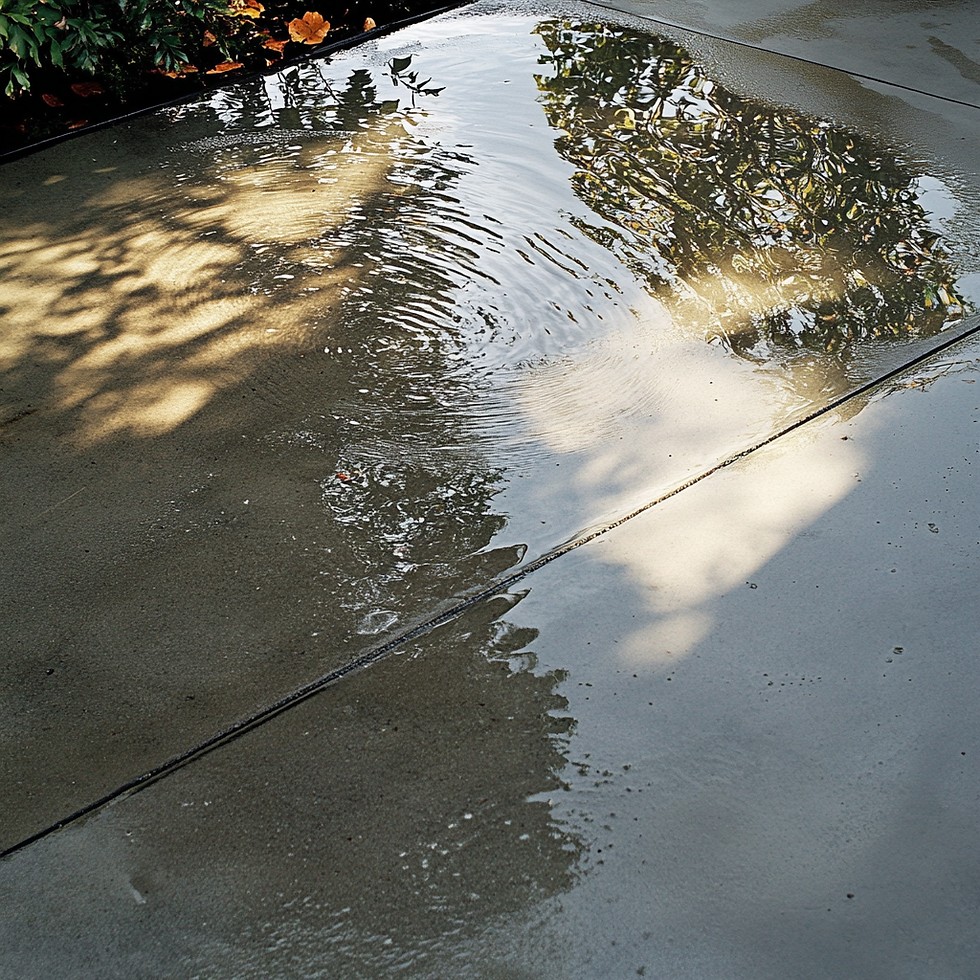The Importance of Proper Drainage in Concrete Work
- Vasyl Pryhara
- Feb 27
- 2 min read
When it comes to concrete construction, proper drainage is often overlooked, but it plays a crucial role in ensuring longevity, durability, and overall performance. Whether you’re installing a driveway, patio, walkway, or foundation, effective drainage solutions can prevent costly repairs and structural damage. Here’s why proper drainage in concrete work is essential and how to achieve it.
1. Preventing Water Damage
One of the biggest threats to concrete structures is water. Without proper drainage, water can pool on the surface or seep beneath the concrete, leading to cracks, erosion, and even foundation instability. Over time, trapped moisture can cause freeze-thaw damage, where expanding ice worsens cracks and weakens the structure.
2. Reducing Soil Erosion
Improper drainage can cause water to wash away the soil beneath a concrete slab, creating voids that lead to uneven surfaces and potential sinking. Proper grading and drainage systems help direct water away, preserving the integrity of the concrete structure and preventing costly foundation issues.
3. Enhancing Longevity
Concrete is a durable material, but excessive exposure to standing water can accelerate deterioration. By incorporating proper drainage solutions like slopes, drains, and gutters, you can extend the lifespan of your concrete surfaces and avoid premature repairs or replacements.
4. Preventing Mold and Mildew Growth
Standing water around concrete areas can lead to mold and mildew growth, which not only affects aesthetics but also poses health risks. Proper drainage helps keep concrete surfaces dry, reducing the risk of microbial growth and keeping your property looking clean and well-maintained.
5. Improving Safety
Water accumulation on concrete surfaces can create slippery conditions, increasing the risk of accidents. Proper drainage solutions, such as surface grading and French drains, help eliminate standing water and make walkways, driveways, and patios safer for both residents and visitors.
6. Best Practices for Proper Concrete Drainage
To ensure effective drainage in concrete projects, consider the following best practices:
Proper Sloping: Ensure that concrete surfaces have a slight slope (typically 1-2%) to direct water away from structures.
Drainage Systems: Install trench drains, French drains, or perforated pipes to guide water away from critical areas.
Permeable Concrete: Consider using porous or pervious concrete that allows water to drain through, reducing runoff and minimizing pooling.
Gutter and Downspout Management: Ensure roof gutters and downspouts direct water away from concrete surfaces to prevent excess moisture buildup.
Expansion Joints and Sealants: Use high-quality expansion joints and sealants to protect concrete from water infiltration and freeze-thaw damage.

Final Thoughts
Proper drainage is a vital factor in any concrete project, helping to prevent water damage, erosion, and structural issues. By implementing effective drainage solutions, you can enhance the longevity and durability of your concrete surfaces. If you need professional concrete services with expert drainage solutions, Concrete Vector is here to help. Contact us today to get started on your next project!



Comments